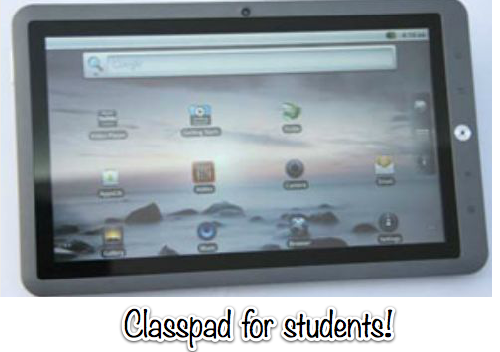Yes! Another tablet. Another cheap tablet. Cheap? You’ll know.
This new tablet, labelled as Classpad, comes from Rohit Pande, who is a graduate of IIT and IIM — two elite educational institutes of India. To put it bluntly, Classpad tablet doesn’t paint a different picture in the tablet industry.
Classpad is yet another regular tablet, with decent specs, perhaps acutely priced and strives to make learning easier for students of India. Classpad is for the schools.
The target audience of Classpad is Indian students and teachers. Teachers can share class notes, students can flick through these notes, write tests and get results on their Classpad.
As per Times of India, this touchscreen tablet comes with a short 7 hour battery life, 1.3 GHz processing speed and is expandable up to 8Gb, with 4GB built-in memory. Available in three different sizes — 7, 8 and 10 inches — Classpad is not as cheap as Aakash.
Classpad costs somewhere between $140 to $260 — that’s Rs. 7500 to Rs. 14000. This instantly begs for the question: Is Classpad really cheap?
Let’s put Aakash in the ring and compare it with Classpad. Aakash, $30; Classpad, $140. Aakash, funded by Indian government; Classpad, from an IITian. Aakash, approximate 10 hours battery life; Classpad, 7 hours battery life.
Aakash handsomely wins.
Also, notice the 7 hour battery life, which I assume is absolutely disappointing. Why? Because students in India are usually supposed to sit in the classroom for 8 hours every day. You do the calculation.
If the tablet makes it into the hands of students, then the good side of this poor battery life will force these students to wake up early, so that they can charge their Classpad before proceeding to school. Jokes apart, but seriously, we students need a tablet that has better battery life, touchscreen that is lag-free, can be used both inside and outside the classroom and should be durable.
And, of course, affordable. Classpad leaves us craving for more, as very little is known about this device. Only time will tell whether this tablet can really make a difference in the educational ecosystem or not.





